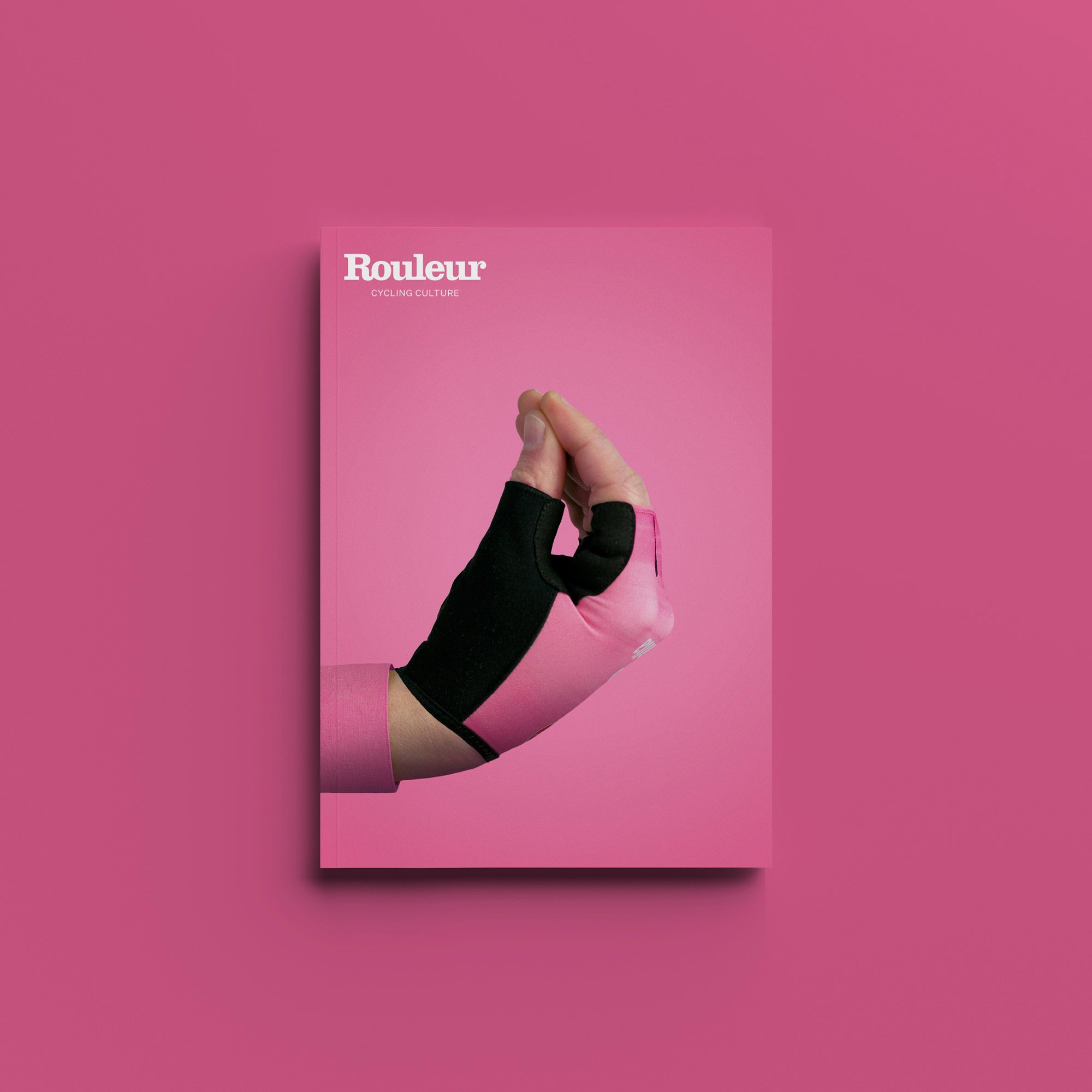La Flèche Wallonne serves as the midweek centerpiece of Ardennes Classics week, nestled between the Amstel Gold Race and the all-important Monument Liège-Bastogne-Liège — the oldest of the trio. However despite this, the race has staged some unforgettable showdowns thanks to its finish up the iconic slopes of the Mur de Huy, which is one of the hardest final kilometres on the WorldTour calendar. The severity of the finale, introduced in 1983, is an act of natural selection; only the strongest — or most suited — riders have claimed victory atop the summit, such as Tadej Pogačar, Julian Alaphilippe, Lance Armstrong, Bernard Hinault and Alejandro Valverde. The latter has the record for the most wins, having taken five in total, including four in a row (2014-2017).
This year after a thrilling edition of Amstel on Sunday, where the favourite Tadej Pogačar was caught with 8km to go after an hour-long chase by Remco Evenepoel and the eventual surprise winner Mattias Skjelmose, Flèche appears to be a more open affair than many would have predicted a week ago. All three of podium finishers at Amstel are scheduled to start on Wednesday with all three having a point to prove: Pogačar that his Amstel result was just a blip, Evenepoel that he is continuing to improve after injury and Skjelmose that Sunday was not a one-off.
La Flèche Wallonne 2025 Route
La Flèche Wallonne is set to unfold over a 205km course featuring 11 sharp, punchy climbs, the most prominent being the final climb up the Mur de Huy. The climbing action gets underway with the Côte de Vers after 17km although this is not particularly challenging, but after 83km the Côte de Petite Somme is harder at 1.2km at 8.8%. After these opening climbs, the peloton will enjoy a short breather before hitting the main circuit at Modave with 100km to go.
This finishing loop, tackled three times in total, includes a trio of decisive climbs: Côte d’Ereffe, Côte de Cherave, and the iconic Mur de Huy. The Côte d’Ereffe stretches for 2.1 km at an average gradient of 5%, softening the legs before a descent into the Hoyoux river valley. A brief flat section of just over 10km gives way to the Côte de Cherave, which opens with a punchy 8.5% gradient for the first kilometre before easing into a gentler incline up to the crest.

La Flèche Wallonne 2025 route (Image: ASO)
A quick five-kilometre drop toward the Meuse leads the riders into Huy, where the infamous Mur awaits. The Mur de Huy, the race’s brutal finale, rises for 1.3 kilometres at an unforgiving average of 9.7%. After a steep ramp in the opening 400 metres, the gradient rarely dips below 10% for the next 800 metres, only slightly relaxing to 6% near the finish. If tradition holds, the final ascent of the Mur is where the race will be decided, with the leading contenders battling it out in a nail-biting finale that has become a hallmark of La Flèche Wallonne.
The peloton tackling the Mur de Huy in 2024 (Image: Zac Williams / SWpix.com)
Contenders
Tadej Pogačar
Sunday’s Amstel was a rare disappointment for the world champion Tadej Pogačar (UAE Team Emirates-XRG), and with it the chance to be the only third man in history to win all three Ardennes Classics in one season. However, often when Pogačar loses he bounces back quickly. After conceding almost six minutes to Jonas Vingegaard on stage 17 of the 2023 Tour de France, it appeared that he was completely blown and could slip from the GC podium but a couple of days later he claimed victory on stage 20. Sunday’s loss wasn’t anywhere near the same magnitude of that crack in the Alps but Pogačar’s bounce back could be just as strong. He is one of the best cyclists of all time for a reason — winning is habitual for him, and although he has two second places in his last two races, he won’t be breaking this habit for long.

Tadej Pogačar on the attack at the 2025 Amstel Gold Race (Image: Zac Williams / SWpix.com)
Remco Evenepoel
Perhaps the strongest rider on Sunday was Soudal Quick-Step’s Remco Evenepoel. The way he chased down Skjelmose and then pulled the majority of the turns to catch the lone Pogačar, it was hard to believe this was the same rider who suffered an off-season crash in December leaving him contemplating his future in the sport. But that’s Remco Evenepoel, he’s got unwavering self-belief and the talent to match. By outsprinting Wout van Aert on Friday’s De Brabantse Pijl, he has proved his finishing kick is better than ever. Wednesday’s Mur de Huy represents a different sort of effort and so far in his career he has not been able to beat Pogačar in a pure watts-per-kilo climbing test, but Flèche represents his best chance yet.
Remco Evenepoel at the Amstel Gold Race 2025 (Image: Zac Williams / SWpix.com)
Mattias Skjelmose
Unsurprisingly the three best riders at Amstel will line up as favourites for Flèche and Lidl-Trek’s Mattias Skjelmose will be brimming with confidence after the biggest win of his career on Sunday. His shock win came as a result of impressive climbing, race savvy and a world-class finishing punch — all three ingredients are prerequisites to compete at Flèche. He could benefit from Pogačar and Evenepoel looking at each other on the Mur de Huy although that said, he will never be able to hide his sprinting ability again as every rider in the peloton will know that he was the man who kicked past the world and Olympic champions to win a major Classic. He came second to Pogačar at Flèche in 2023, can he go one better and beat the world champion for second time in the space of four days?
Mattias Skjelmose winning 2025 Amstel Gold Race (Image: Zac Williams / SWpix.com)
Tom Pidcock
Tom Pidcock (Q36.5 Pro Cycling Team) will have been disappointed to miss out and be stuck in an uncooperative chasing group at Amstel, where he finished ninth. Despite Flèche being the Ardennes Classic which suits the Brit the least (he has won Amstel and finished second at Liège), the contenders will be watching him closely. At under 60kg with a fearsome sprint, Pidcock is well suited to the steep slopes of the Mur de Huy. So far this year he has struggled to be in the right position at key points in the races, but if his Q36.5 team can deliver him to the bottom of the final climb with the likes of Pogačar, Evenepoel and Skjelmose, he could be in a chance to claim victory.

Tom Pidcock at the 2025 Amstel Gold Race (Image: Zac Williams / SWpix.com)
Other contenders
Due to the way Flèche often plays out, where it usually comes down to the 1km watts-per-kilo test up the Mur de Huy, there are only a handful of riders who have the specific attributes to challenge the key contenders. Strong puncheurs like Romain Grégoire (Groupama-FDJ) and Thibau Nys (Lidl-Trek) will be hoping to compete with the best climbers. This is what Dylan Teuns (Cofidis) did when he won the race in 2022, but the Belgian hasn’t been showing that kind of form so far this year.
A number of teams start with multiple options. British duo from Israel-Premier Tech Joe Blackmore and last year’s winner Stevie Williams have a chance for high-place finishes, with the former in particular showing great shape this spring. Team Visma-Lease a Bike pair Tiesj Benoot and Ben Tulett will likely adopt dual leadership as the squad look to secure their first Classic of the year. Tudor Pro Cycling Team start the race with two former winners in Marc Hirschi (2020) and Julian Alaphilippe (2018, 2019, 2021).

Julian Alaphilippe at the 2025 Amstel Gold Race (Image: Zac Williams / SWpix.com)
For the other strong Ardennes men like Ben Healy, Neilson Powless (both EF Education-EasyPost), Santiago Buitrago (Bahrain-Victorious), Louis Barré (Intermarché-Wanty) and Mauro Schmid (both Team Jayco Alula), they will likely to have to get away earlier as they won’t be able to match the punch of the top contenders on the final ramp up Mur de Huy.
Prediction
Despite missing out at Amstel, we think Pogačar’s uphill kick to the line will be hard to beat, although it will be a close affair with Evenepoel and Skjelmose in the form they are in.
































